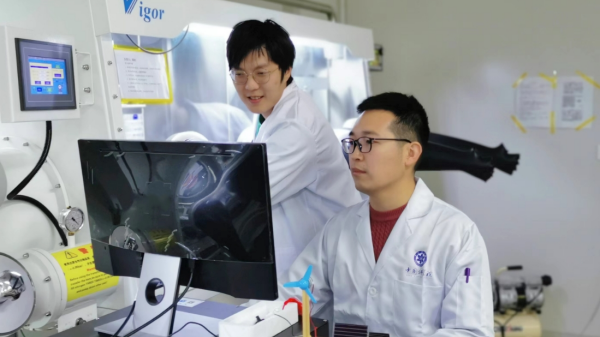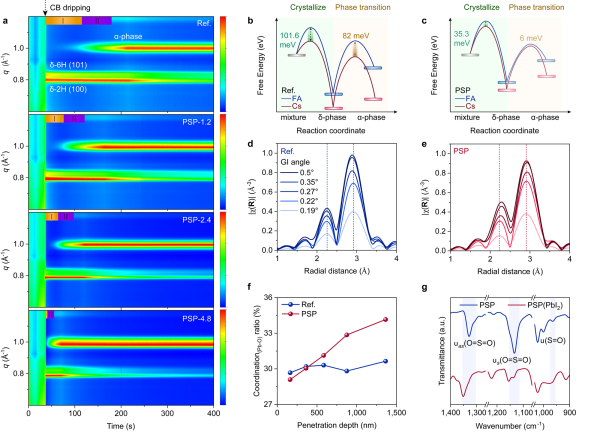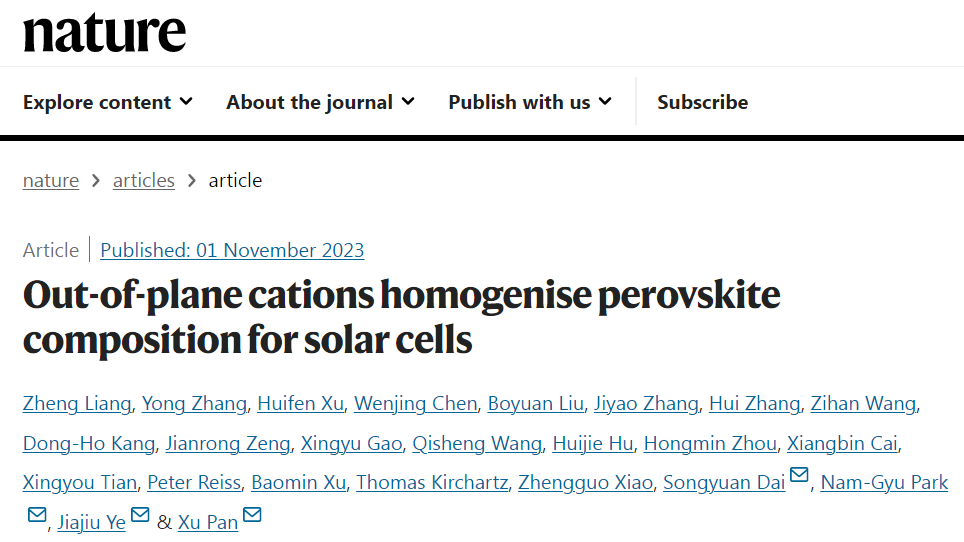
Scientists test the performance of the perovskite solar cells. /CAS
Scientists test the performance of the perovskite solar cells. /CAS
An international research team led by Chinese Academy of Sciences (CAS) has achieved a breakthrough in fabricating perovskite solar cells, with a maximum power conversion efficiency of 26.1 percent, the CAS said on Friday.
The study suggests a promising technological path for improving conversion efficiency and stability of perovskite solar cells, according to the CAS.
A perovskite solar cell is an emerging solar cell that employs a metal halide perovskite compound as a light absorber.

Relevant research results of the study. /CAS
Relevant research results of the study. /CAS
Currently, silicon is the most commonly used material in photovoltaic cells, with the upper limit of efficiency for crystalline silicon at 29.4 percent, according to a Xinhua report, citing Luo Jingshan, a professor at College of Electronic Information and Optical Engineering of Nankai University in north China's Tianjin Municipality.
Theoretical maximum efficiency of perovskite solar cells is up to 33 percent. If two perovskite cells are stacked on top of each other, it can reach 45, it added.

A screenshot of the study published in the journal Nature.
A screenshot of the study published in the journal Nature.
For perovskite solar cells, a crucial focus worldwide is how to enhance their conversion efficiency while ensuring their stability.
The study found for the first time that the internal cation inhomogeneity of perovskite was the root cause in affecting battery performance.
The scientists devised a solution by using an additive to produce homogeneous films, thus achieving a conversion efficiency of 26.1 percent and 25.8 under third-party certification.
In addition, the cells exhibited long-term stability, with conversion efficiency maintained as high as 92 percent of the original value after 2,500 hours of maximum power point tracking.
The achievement matches the current record in the field, according to AZoM, an online publication for materials science.
The relevant study was published in the journal Nature on November 1.




